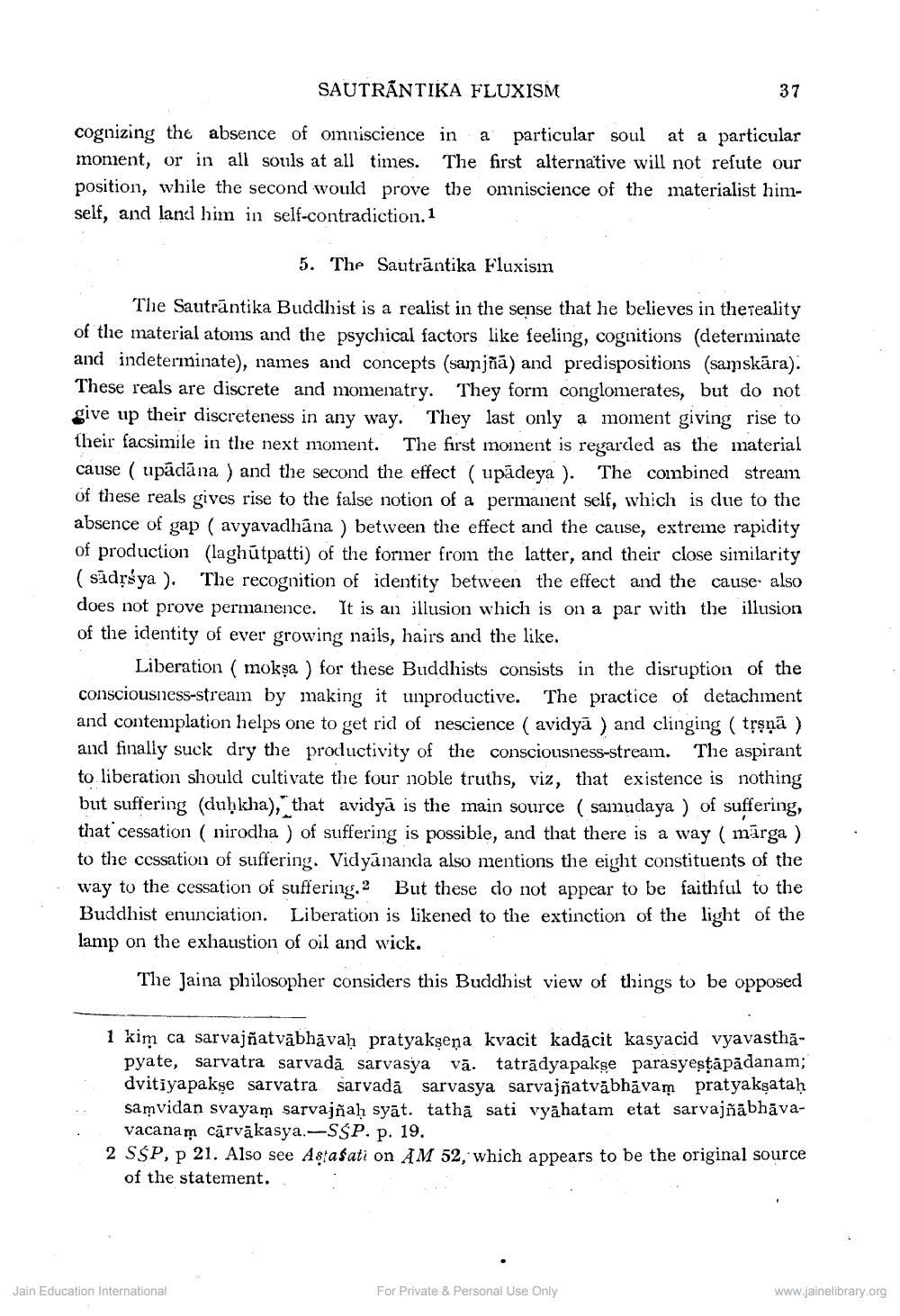________________
SAUTRĀNTIKA FLUXISM
37
cognizing the absence of omniscience in a particular soul at a particular moment, or in all souls at all times. The first alternative will not refute our position, while the second would prove the omniscience of the materialist himself, and land him in self-contradiction. 1
5. The Sautrántika Fluxisin
The Sautrāntika Buddhist is a realist in the sense that he believes in thereality of the material atoms and the psychical factors like feeling, cognitions (determinate and indeterminate), names and concepts (samjñā) and predispositions (samskāra). These reals are discrete and momenatry. They form conglomerates, but do not give up their discreteness in any way. They last only a moment giving rise to their facsimile in the next moment. The first moment is regarded as the material cause (upādāna ) and the second the effect (upādeya ). The combined stream of these reals gives rise to the false notion of a permanent self, which is due to the absence of gap ( avyavadhāna ) between the effect and the cause, extreme rapidity of production (laghútpatti) of the former from the latter, and their close similarity (sādņsya ). The recognition of identity between the effect and the cause also does not prove permanence. It is an illusion which is on a par with the illusion of the identity of ever growing nails, hairs and the like.
Liberation (mokşa) for these Buddhists consists in the disruption of the consciousness-stream by making it unproductive. The practice of detachment and contemplation helps one to get rid of nescience ( avidyā ) and clinging ( trşņā ) and finally suck dry the productivity of the consciousness-stream. The aspirant to liberation should cultivate the four noble truths, viz, that existence is nothing but suffering (duh kha)," that avidyā is the main source ( samudaya ) of suffering, that cessation ( nirodha ) of suffering is possible, and that there is a way ( mārga )
to the cessation of suffering. Vidyananda also mentions the eight constituents of the · way to the cessation of suffering. But these do not appear to be faithful to the
Buddhist enunciation. Liberation is likened to the extinction of the light of the lamp on the exhaustion of oil and wick.
The Jaina philosopher considers this Buddhist view of things to be opposed
1 kim ca sarvajñatvābhāvah pratyaksena kvacit kadācit kasyacid vyavasthā
Pyate, sarvatra sarvadā sarvasya vā. taträdyapakse parasyestapadanam; dvitiyapakse sarvatra sarvadā sarvasya sarvajñatvābhāvam pratyakşataḥ samvidan svayam sarvajñaḥ syāt. tathā sati vyāhatam etat sarvajñābhāva
vacanam cârväkasya.-SŚP. p. 19. 2 SŚP, P 21. Also see Asiasati on AM 52, which appears to be the original source
of the statement..
Jain Education International
For Private & Personal Use Only
www.jainelibrary.org




